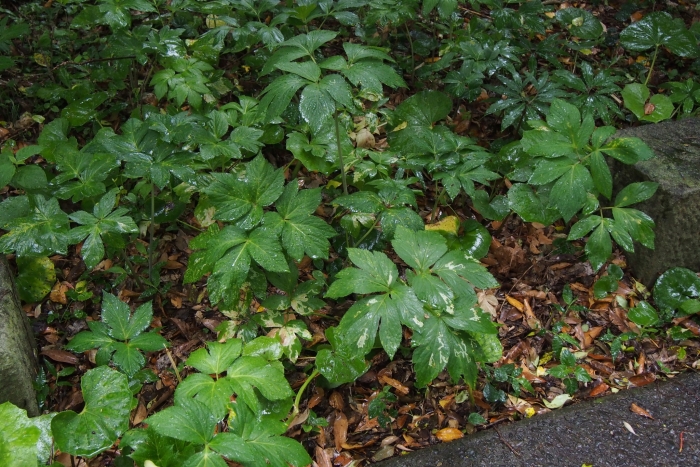Japanese Angelica
(Angelica japonica)
Japanese Angelica (Angelica japonica)
/
/

harum.koh
CC BY-SA 4.0
Image By:
harum.koh
Recorded By:
Copyright:
CC BY-SA 4.0
Copyright Notice:
Photo by: harum.koh | License Type: CC BY-SA 4.0 | License URL: http://creativecommons.org/licenses/by-sa/4.0/ | Rights Holder: harum.koh | Publisher: iNaturalist | Date Created: 2017-05-04T17:03:27-07:00 |
























Estimated Native Range
Summary
Angelica japonica, commonly known as Japanese Angelica, is a perennial herb native to various habitats in Japan, ranging from lowland valleys to subalpine zones, often found in moist and shaded areas. It is native from the Kantō region to Okinawa. This species typically grows up to 5 feet tall and features dark, lustrous, pinnate leaves with red-striped petioles, adding a unique texture to garden settings. From late spring to early summer (April to June), Angelica japonica produces showy umbels of white flowers that are attractive to pollinators.
In cultivation, Japanese Angelica is valued for its architectural height and the contrast its dark foliage provides against other garden plants. It is used in ornamental borders, woodland gardens, and as a naturalistic planting in moist, shaded areas. It prefers rich, moist soil with good drainage and thrives in part shade to full shade conditions. While not commonly grown, it can be a striking addition to a garden designed with biodiversity in mind. Care should be taken when handling as the sap can cause skin irritation in some individuals. There are no major disease problems, but it may require staking in windy locations due to its height.CC BY-SA 4.0
In cultivation, Japanese Angelica is valued for its architectural height and the contrast its dark foliage provides against other garden plants. It is used in ornamental borders, woodland gardens, and as a naturalistic planting in moist, shaded areas. It prefers rich, moist soil with good drainage and thrives in part shade to full shade conditions. While not commonly grown, it can be a striking addition to a garden designed with biodiversity in mind. Care should be taken when handling as the sap can cause skin irritation in some individuals. There are no major disease problems, but it may require staking in windy locations due to its height.CC BY-SA 4.0
Plant Description
- Plant Type: Herb
- Height: 3-10 feet
- Width: 1-3 feet
- Growth Rate: Moderate
- Flower Color: White
- Flowering Season: Summer
- Leaf Retention: Deciduous
Growth Requirements
- Sun: Full Sun, Part Shade
- Water: Medium
- Drainage: Medium, Fast
Common Uses
Bee Garden, Border Plant, Low Maintenance
Natural Habitat
Native to various habitats in Japan, ranging from lowland valleys to subalpine zones, often found in moist and shaded areas
Other Names
Common Names: Angelica Tree
Scientific Names: , Angelica japonica, Angelica kiusiana, Angelica sieboldii,
GBIF Accepted Name: